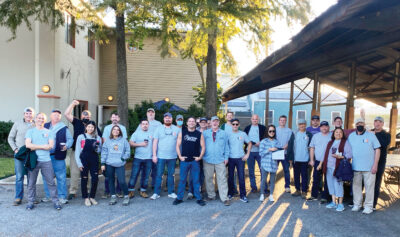In the Southeast, the Hardwood lumber market is in positive territory, according to sources contacted – with variations of that theme.
A Hardwood flooring manufacturer in Arkansas said that his “strong market continues to be strong.” In fact, he noted that his market “continues to be better. There is increased demand but a lack of supply.”
He handles Red and White Oak, Walnut and Hickory. “We sell more Red Oak,” he commented. However, “White Oak continues to have high demand,” he added. He sells his flooring to flooring distributors nationwide. “Their business is strong,” he observed.
Asked if transportation or other factors are inhibiting his business, he replied, “Not much. This is the greatest time in 100 years to be in the Hardwood flooring business. Transportation is not overall a problem. It is all at high cost. We have steady business and a steady relationship with truckers, and we’re able to get reliable trucking year-round.
“Everything we do is a relationship business with our suppliers, our vendors, our truckers and our customers,” he continued. “Everything we do is about consistent relationships, maintaining business through the ups and downs of the market. This gives us an advantage.”
A sawmill representative with mills in Georgia and North Carolina assessed his business as good. “All items are moving pretty well,” he commented. “Sales are a little bit sluggish in Common Poplar in the South, but the Appalachian region is sold out through the end of the year, based on what we have cut and based on what I think we will cut.”
Rhetorically, he asked, “Is the market as brisk as it was six months ago? No, it’s not. But with a little bit of digging and a little more elbow grease, you can find your markets and move the lumber and keep going. After a year now, and sawing Poplar to beat the band, I’m sitting on four loads. It’s not like I’ve got 400,000 board feet or a million board feet. I’ve got four loads. I think we’re going to be just fine.”
He sells Red and White Oak, Poplar and Ash. His best seller, as always, is Red Oak. Sixty percent of his total production is Red Oak. However, “White Oak is bringing the most money now. But it’s doesn’t have nearly the production that Red Oak has.” He sells this lumber to distribution yards and end users. Their business is “going well, as far as I can tell,” he stated.
“Transportation is a problem,” he observed. However, he recently got some orders for lumber, and he asked his office manager the status of their preexisting orders to see if he could get this lumber to the customers with these more recent orders. The office manager said if they could ship out four orders within a few days, they would be caught-up transportation-wise. In that case, he said, “I’m OK. I can live with that.”
A representative of a concentration yard in Tennessee judged his business to be OK. “It has probably softened up a little from a few months ago. One issue,” he said, “is that competition to get green lumber is still pretty high. We get as much as we can.”
Compared to several months ago, his market is “probably worse but not drastically worse,” he stated.
He sells all Appalachian species, leaning to FAS, including Red and White Oak, Poplar, Ash, Walnut, Hickory, Cherry, Maple and Basswood. His best seller is White Oak. He handles thicknesses from 4/4 to 8/4. This lumber is sold to distribution yards and some end users. “They’re still doing pretty well,” he said of his customers.
Asked if any negative factors are slowing down his business, he stated, “Labor is a problem that affects our business. With COVID, we have had to juggle people when employees got the virus.”









